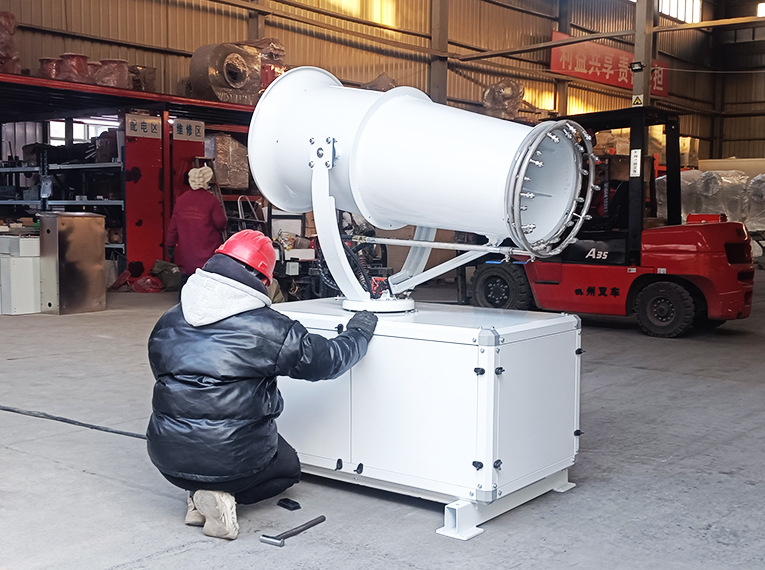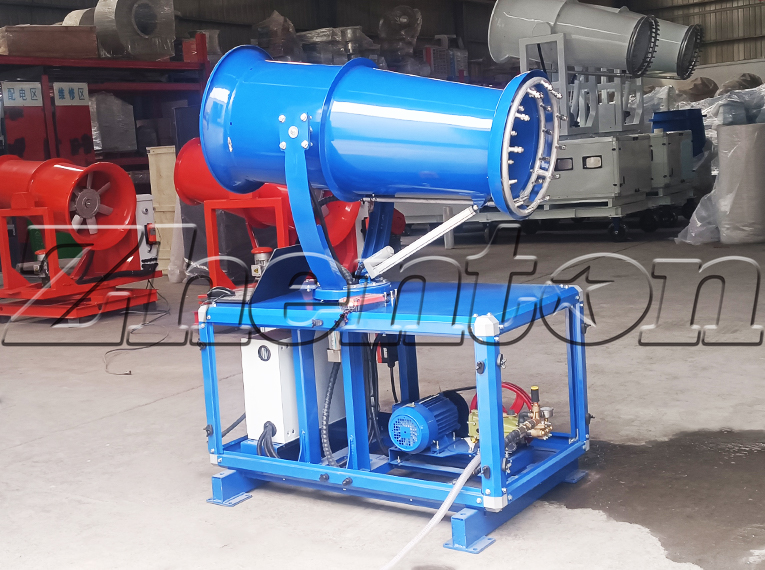When Lahore's Air Quality Index (AQI) repeatedly surpasses 1000 and Punjab Province, known as the "granary," is enveloped in toxic smoke, Pakistan confronts one of the world's most severe smog crises. Data reveals that agricultural straw burning significantly contributes to PM2.5, a primary atmospheric pollutant, driving the national PM2.5 levels to 14 times the standard set by the World Health Organization. This environmental hazard not only results in an annual 7% loss in GDP but also reduces the average life expectancy of residents by 3.3 years. Caught between farmers' need for cost-effective straw disposal and environmental protection imperatives, anti-smog guns have emerged as an efficient solution to combat smog stemming from straw burning.
A large number of particulate matter and harmful gases generated by straw burning tend to form persistent smog in windless weather. Relying on high-pressure atomization technology, the anti-smog gun can convert water molecules into fine mist droplets of 30-150 microns. These droplets can accurately capture atmospheric pollutants such as PM2.5 and nitrogen oxides, and achieve rapid dust reduction through adsorption and sedimentation. Considering the characteristics of Pakistan's agricultural areas—being vast and with scattered straw-burning points—the anti-smog gun can flexibly adjust its spray angle and range, covering an area of thousands of square meters per unit. It can effectively deal with both the pollution spread after field burning and the emergency response to urban smog.
Compared with the inefficient and wasteful traditional water-spraying dust reduction method, the anti-smog gun has obvious adaptability advantages. Its atomized water droplets have strong adsorption capacity, which can effectively reduce the concentration of aerosols produced by straw burning. Moreover, its water consumption is only 1/3 of that of traditional sprinkler trucks, which is in line with the current situation of water scarcity in some regions of Pakistan. In Punjab Province's anti-smog campaigns, anti-smog guns have been deployed in conjunction with air quality monitors, becoming a key equipment for the government's smog control efforts. This not only avoids the excessive impact of "green lockdowns" on agricultural production but also provides farmers with a low-cost option for pollution control.

As a sustainable governance tool, the anti-smog gun serves both emergency response and long-term governance. During the peak straw-burning season from October to December, it can be deployed flexibly at the junction of farmlands and cities to suppress the spread of smoke from burning in real time. In non-burning seasons, it can be used for industrial dust reduction and road cleaning, realizing multi-purpose use of one equipment. Its features of easy operation and low maintenance cost also make it suitable for application scenarios in rural areas of Pakistan, as it can be put into use without complex technical training.

In recent times, the World Bank's substantial investment of 300 million US dollars in Pakistan's smog control efforts underscores the urgency of the situation. The anti-smog gun, a tried-and-tested and highly effective pollution control device, is emerging as a pivotal asset in the fight against atmospheric pollutants stemming from agricultural straw burning. This innovative equipment serves a dual purpose: it rapidly mitigates the health risks posed by smog to local residents and simultaneously creates a crucial window of opportunity for the widespread adoption of straw resource utilization machinery, like super seeders. By doing so, it facilitates Pakistan's escape from the detrimental cycle of "burning-pollution-reburning," bringing the vision of "seeing Lahore clearly" within reach and transforming it from a distant dream into an achievable reality.
Next
No Data!











